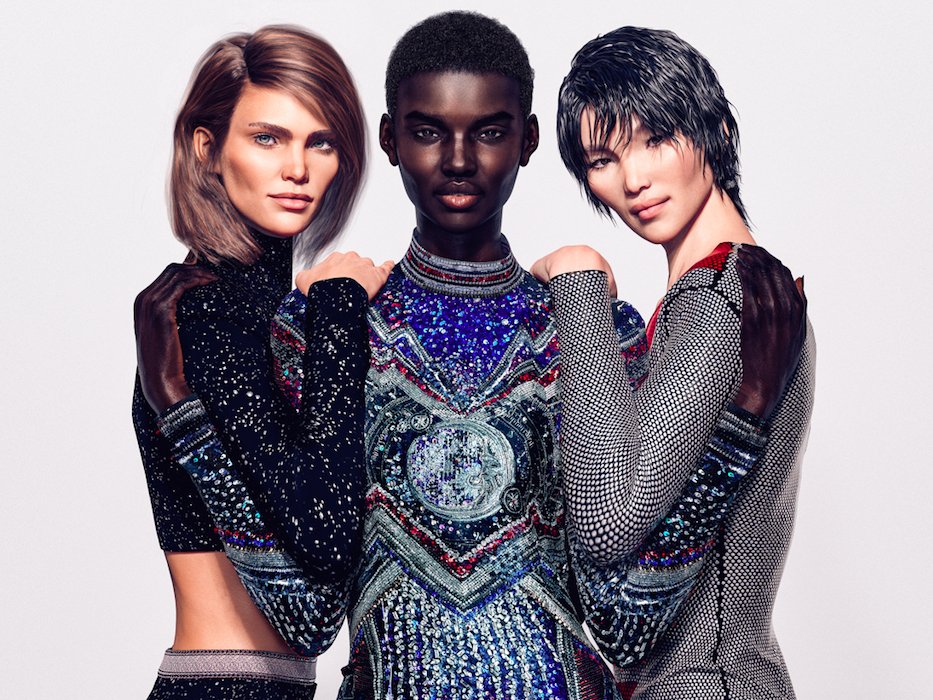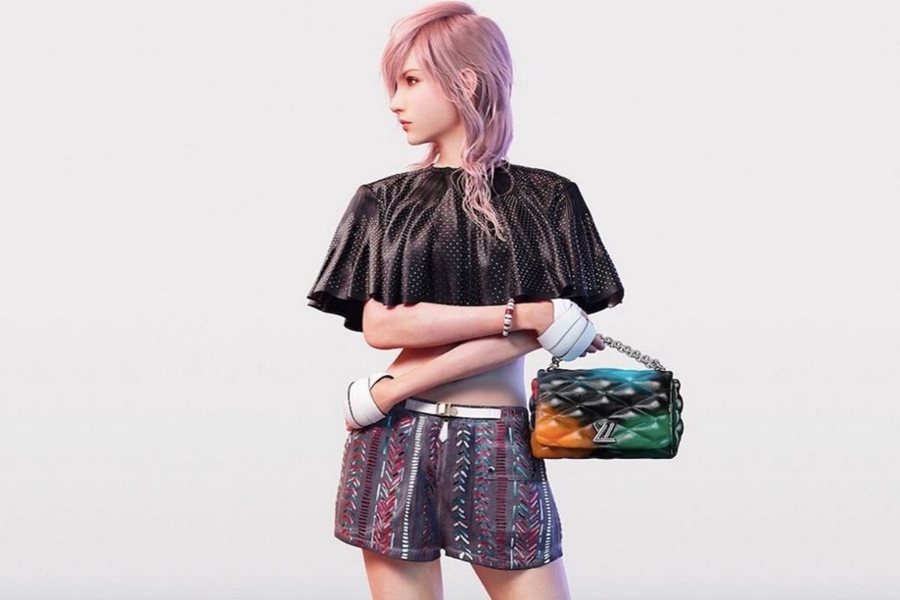In early 2016, Louis Vuitton started a trend, one that had nothing to do with styling or silhouettes, handbags or footwear. It had to do squarely with models. The Paris-based fashion house tapped an anime character, Final Fantasy’s female heroine, Lightning, for its Spring/Summer ad campaign. Lightning appeared on billboards alongside models Rianne Van Rompaey, Sarah Brannon, Jean Campbell, Fernanda Ly, Doona Bae, and Jayden Smith. The casting by Louis Vuitton was explained by creative director Nicolas Ghesquière to be a perfect representation of “a global, heroic woman for a world where social networks and communications are now seamlessly woven into our life.”
Ghesquière elaborated on the move, saying that Lightning “is the symbol of new pictorial processes, one that heralds a new era of expression.”
Fast forward to 2018 and it appears that the French designer was absolutely on to something, as the seemingly wacky trend he initiated has been gaining steam. In February, for instance, Rihanna’s Fenty Beauty shared an image on Instagram of Shudu, a budding new model, who has quickly become a social media sensation. As of this month, the newbie model has racked up nearly 150,000 followers on Instagram, and appears alongside fellow computer-generated models Margot and Zhi in Balmain’s Pre-Fall 2018 campaign.
The interesting thing: Shudu is not technically real. She is completely computer-generated. Or as her Instagram account declares, she is “the world’s first digital supermodel.”
She Looks “Real Enough”
British photographer Cameron-James Wilson is responsible for Shudu, the virtual model he created in an attempt to “recapture the kind of beauty epitomized by black supermodels, such as Alek Wek and Duckie Thot.” According to News.com.au’s Nick Whigham, Wilson “initially, kept her [computer-generated] nature under wraps, even replying to messages as her on Instagram.” And in the age of “filters, airbrushing and Photoshop,” Whigham writes, Shudu “certainly looks real enough.”
And “real enough” is translating into very real money. “Wilson’s creation is gathering tens of thousands of followers — and in a world of so-called ‘influencers’ and incessant social media marketing, that sort of attention can translate into big bucks,” per Whigham. Unsurprisingly, the Instagram account of Wilson’s model creation, according to the BBC, “has proved a powerful and lucrative platform, especially for fashion brands, to reach new markets.”
 image: Balmain
image: Balmain
Prada, for instance, certainly paid someone connection with its Fall/Winter 2018 partnership with “the mysterious cyber model” Lil’ Miquela, which included an Instagram takeover. A publicist for Miquela asserted that she has, in fact, “made money by designing for and working with brands.” She is also bringing in revenue in connection with her recent collaboration with musician Bauer, for which promotional billboards appeared in New York’s Times Square this summer.
Who is on the receiving end of these checks, you ask? Brud, the Los Angeles-based robotics and artificial intelligence company, has been linked to Miquela, who boasts 1.4 million Instagram followers, a top song on Spotify, articles about her in publications ranging from Nylon to Vogue (the latter of which labelled her an Instagram “it” girl last summer), and merch that she can barely keep in stock.
“The fact that such a company is likely linked with Lil’ Miquela is hardly a surprise,” according to Whigham, and he is right. Considering that a whopping 91 percent of luxury brands rely on influencer marketing and given various advances in technology, “which make it increasingly difficult to distinguish the real from the fake when navigating the online world,” it is arguably just good business for companies to be building influencers of their own.
Add to this the fact that the technicalities of these women’s existences is not preventing them from building significant social media followings. It also is not stopping brands from clamoring over them, booking them for jobs (à la Prada), and sending them gifts.
Miquela and her fellow harbingers of “a virtual-first future foreshadow a world in which ‘celebrity,’ like so many other jobs we consider essentially human, can be automated,” Vogue’s Eric Chang wrote not too long ago.
Like Human Influencers Only Better
And to be frank, these influencers are attractive for an additional reason: They stand to remove some of the very real risk of bad press that tends to come with big-name brand ambassadors, as we learned not too long ago with Logan Paul, the You-Tube mega-star who fell out of grace after posting a video depicting a dead body hanging from a tree in the Aokigahara forest, which is known as Japan’s “suicide forest,” due to the high number of suicides that take place each year within the confines of the wooded area near Mt. Fuji. Around the same time, adidas felt the heat of having Kanye West as an ambassador of its brand after West came under fire for a string of tweets, including one about slavery being a “choice.”
Unsurprisingly, those scandals (and others) have led brands to rethink their marketing strategies when it comes to big-name individuals and influencers – including Instagram stars and video bloggers, among others.
Companies take on quite a significant amount of risk when contracting with social media figures, in much the same way as they do when they enlist Hollywood stars, professional athletes, big name fashion designers, and others celebrities to endorse their products. In an overly connected world, these famous individuals and their behavior – whether in a professional capacity or in their often paparazzi-plagued or social media-documented personal lives – tends to serve as a reflection of the brand.
While morals clauses – contract provisions that enable brands to immediately terminate a contract, without any penalty, should an ambassador act in a manner that would tarnish the reputation of the brand – are useful to some extent in dealing with influencers, relying on a computer generated version might be the most fool-proof – and lucrative – marketing method of all.
And there might be some room to assume that these influencers might be better at consistently disclosing their material connections with brands and sponsored posts (yes, they are almost certainly be subject to the Federal Trade Commission (“FTC”) guidelines (even if they are computer generated) if they are endorsing products or brands in exchange for some form of compensation) than real-live influencers, who, for the most part, continue to engage in adverting that lacks any significant amount of transparency.
It is worth noting that just because the FTC has not specifically applied the language of the FTC Act to computer generated influencers does not mean the law does not apply to them. In fact, the broad language of the FTC Act, which states, in part, that the FTC has the power to “prevent unfair methods of competition and unfair or deceptive acts or practices in or affecting commerce,” almost certainly ensures that influencers – both real and computer generated – fall within its bounds.
Moreover, as the FTC has stated in the past, “The general principles of advertising law apply online, [and] new issues arise almost as fast as technology develops.”
With these things in mind, it seems that much like bank tellers, factory workers, financial analysts, and even some lawyers, models’ and influencers’ jobs could very easily be replaced by robots. If the Balmain campaign is anything to go by, it seems like they already are.











